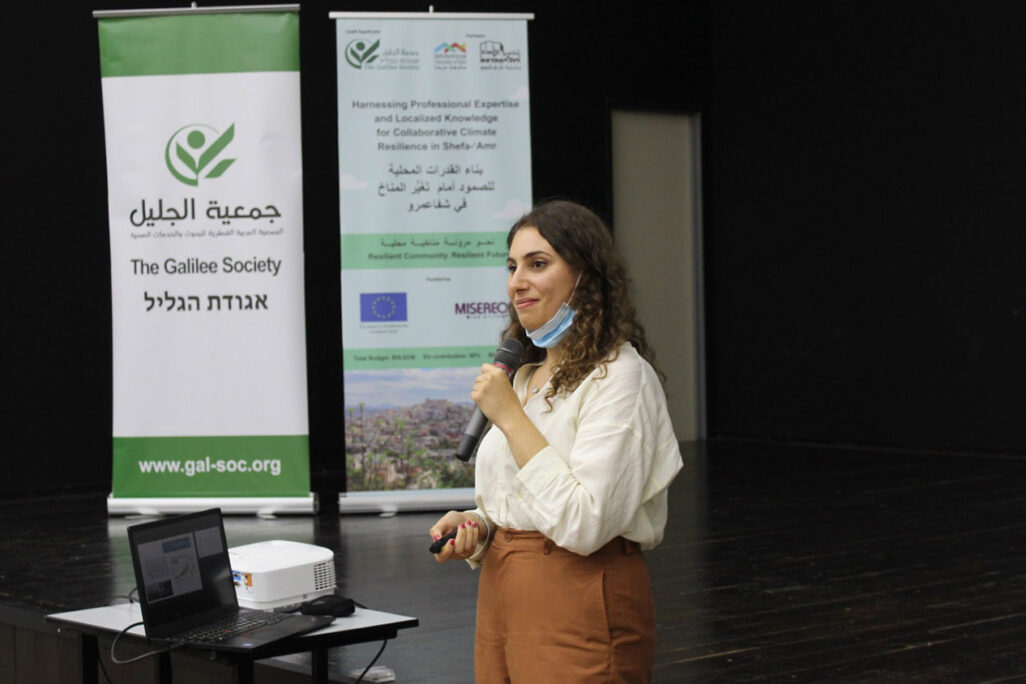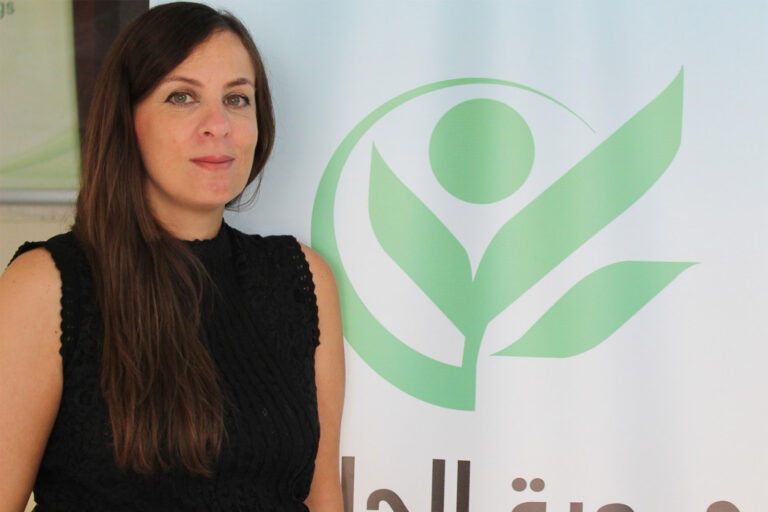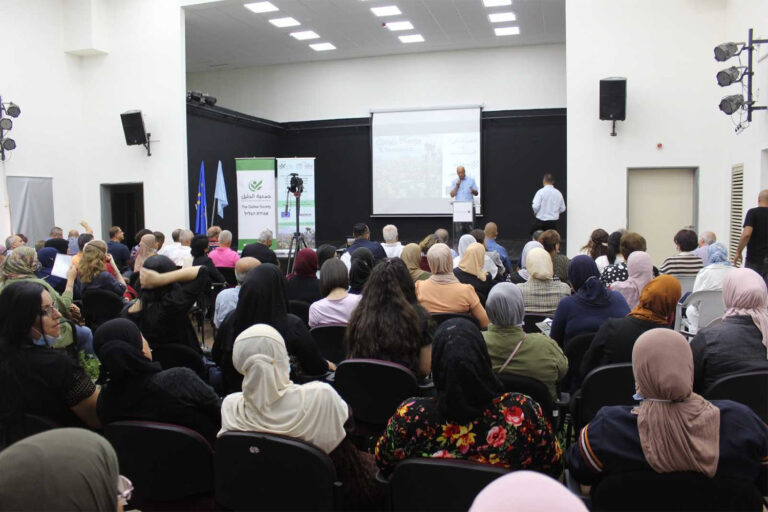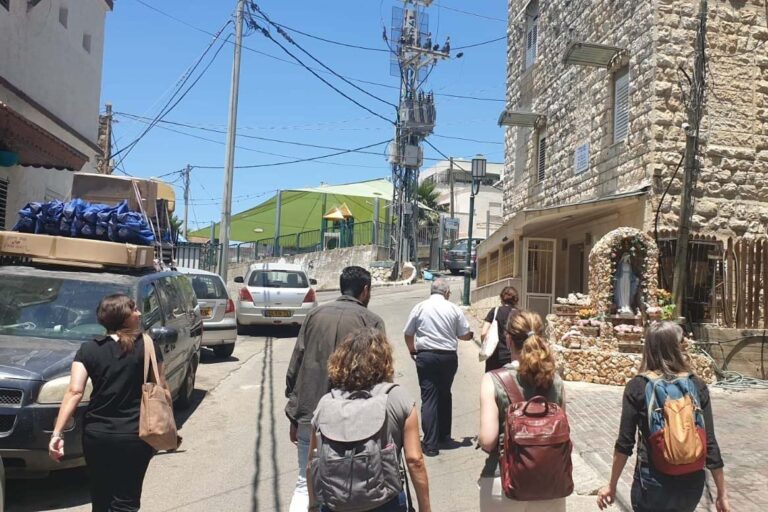
Shefa-Amr, an Arab city in Israel’s North, is the country’s first Arab city to build a comprehensive climate resilience plan. The plan is being coordinated by the Environmental Justice Center of the Galilee Society, a non-profit organization in Israel that aims to empower the Arab Israeli community, along with the University of Haifa and the Shefa-Amr municipality.
“There is no preparation for climate change in the Arab communities, so first of all, we wanted to create awareness of how [preparing for climate change] can be done,” Amira Arraf, director of the Environmental Justice Center, told Davar.
“Shefa-Amr is in socio-economic cluster three,” Arraf said, referring to an Israeli methodology for evaluating the socio-economic status of different areas on a scale of one to ten (least affluent to most affluent). Tel Aviv, for example, is in socioeconomic cluster eight.
The city’s socio-economic status is relevant, Arraf explained, because although underprivileged populations contribute less to the climate crisis, "climate change is a fact. The question is just how prepared the population is.”

The issue of climate resilience has not yet found its way into the five-year development plan for Israel’s Arab community that was approved by the Knesset last October, nor does it feature in the new master plan for Shefa-Amr that plans to double the city’s population. But according to Arraf, “this is the conversation that is called for right now, both on the individual level and on the level of urban planning.”
“We are examining physical vulnerability in terms of infrastructure and of societal vulnerability,” Arraf explained. “For example, someone who has an air conditioner can turn it on in an extreme heatwave. Someone who does not have an air conditioner, or even electricity, will suffer. This vulnerability is due to a socio-economic situation. It’s facing climate change on an individual level.”
Arraf also discussed the importance of urban planning that allows residents to walk rather than rely on carbon-emitting vehicles.
“There’s a trend to build neighborhoods where everything can be done on foot,” she said.
Central to this model of climate-resilience planning is a community-driven approach, rather than a total reliance on external experts.
“We will do this by working with the residents and raising awareness, working with key stakeholders, students, local and activist organizations,” Arraf said.

Arraf explained that her organization has been holding lectures and meetings for the public on the topic, as well as meeting with experts and local officials over the last year, to collaboratively build their action plan.
“In the end, there will be an action plan. But the process is no less important,” she said. “This isn’t something that we can do [ourselves] for the residents.”
Residents are aware of, but not worried by, the climate crisis
As part of the effort to engage the community, project manager Alaa Abid conducted a survey of Shefa-Amr’s residents to understand their level of knowledge about climate change, their perception of the crisis, and how confident they feel about being able to handle the changing climate.
About half of the respondents reported having a high level of knowledge on the subject. The survey also showed that the climate crisis is indeed a priority for residents, although most residents are not worried about it.
“The community coordinator contacted all the organizations in the community and we offered them a lecture on the subject,” Abid explained. “Thirteen groups came. Hundreds of people heard the lecture over the course of six months. We have permission to enter the schools. This is an active community, it’s not one that’s difficult to reach.”
The next step, she said, is to involve the community in building the plan.
“We’re mobilizing residents for focus groups, surveys about social vulnerability and vulnerability assessments,” Abid said. “We want to understand the community’s weaknesses and strengths, and gauge how at risk and how resilient the community is.”

Along with the information from the community, Abid is also drawing on data such as temperatures in different neighborhoods in the city and data regarding municipal infrastructure.
“After presenting the data, we will hold a brainstorming workshop with the municipality and residents, [discussing] what can be done,” she explained, regarding the project’s next steps. “We will make a list of priorities and build a work plan. We will ask the municipality what it needs to create a better emergency plan.”
Abif explained that the Environmental Justice Center will set up a working group, which already has 13 volunteers. They have put out a call for community project proposals, offering five grants of 9,000 euros [about $10,180]. Once the projects are chosen, the Center will work with the winners to implement them.
Abid made clear that the project in Shefa-Amr is meant to be the first, but not the only, of its kind. She explained that they have sent a survey to other municipalities, asking if they had plans to address climate change or were interested in creating such plans.
In recent workshops with local councils, most of the officials cited a need for education. This indicates a problem, Abid claims.
"They are engaged in environmental education, but without a practical aspect," she said. "There are no projects, no application of the lessons learned. We need both so we can learn from experience.”
For Abid, raising awareness on its own is just not enough.
“People have heard about the climate crisis. What I'm talking about is people actually feeling concerned about it,” she said.
“We need to be thinking about daily life and routine, because dealing with climate change isn’t just going to look like responding to disasters. Warming will affect work, the economy," Abid said.
"There is such a thing as ‘climate narrative,’ how to talk about climate change, how to get people involved. We need to present the problems and give possible solutions. The participation of the community is the important part,” she continued. “It’s a long process, and I hope we succeed.”






